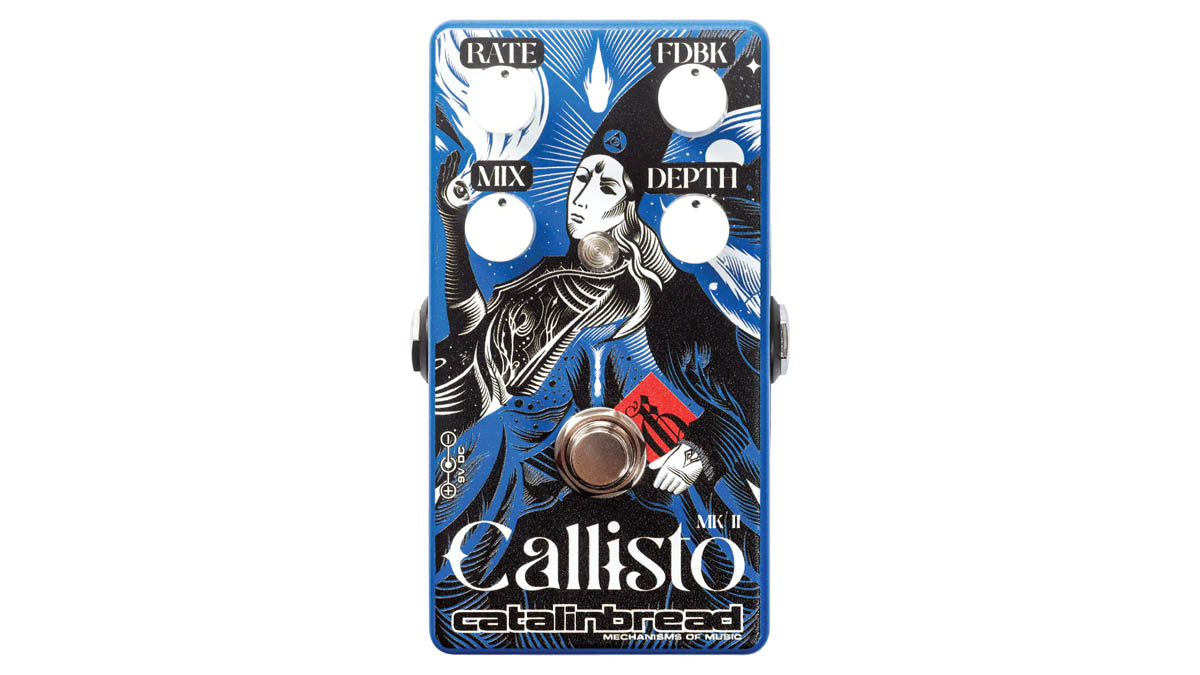Catalinbread blurs the line between chorus and flanger with upgraded Callisto MKII
100 per cent analog, the Callisto MKII can perform a variety of roles on your pedalboard, from adding width and sheen to tape echo warble, pitch vibrato and flanger-esque sounds
Catalinbread has taken a second pass at its Callisto Chorus/Vibrato, retooling the versatile modulation pedal with some new features and a fresh paint job, while retaining the 100 per cent analog build.
The original actually said “chorus/vibrato” on the front of the housing, and this MKII version will nail those sounds, too. But with the Feedback dial on hand, the second-generation Callisto also promises heavily textured sounds that could do the job of a flanger.
In many respects, the ability to see-saw between classic BBD chorus, pitch-vibrato and quasi-flanger sound is the sign of a great modulation pedal, taking up less space on your pedalboard and offering players plenty of options.
At its most subtle settings, the Callisto MKII could be deployed to add a little sheen to your electric guitar tone, width and depth to make arpeggios feel a little more premium. It can also go a little more psychedelic, calling to mind the mechanical capriciousness of ye olde tape echo machine warbling away, a rotating speaker effect, or something somewhere in between.
The Callisto MKII has dials for Rate, setting the speed of the LFO, Feedback, which sends some of the modulated signal back through the BBD for more intense sounds, Mix to control the balance of wet and dry signals, and Depth to adjust how big and deep you want that modulation.

It’s the Feedback control that we are here for, though. That’s the one that distinguishes the Callisto MKII from a common chorus pedal. As Catalinbread notes, it never quite becomes a flanger when dimed, but it asks the question of the audience – just what exactly did you hear?
“You’ve heard guitar players argue for decades about whether Andy Summers played a chorus or a flanger, yeah?” says Catalinbread. “That sound and many others live inside the Callisto MKII within its intuitive set of controls.”
Get The Pick Newsletter
All the latest guitar news, interviews, lessons, reviews, deals and more, direct to your inbox!
Sounds good. Catalinbread says the Calisto MKII can take a hot signal, so feel free to place it after your overdrive pedal. It takes 9V DC and draws 10mA from your pedalboard power supply, it’s priced $209, and it is available now.
To order, or for more information, head over to Catalinbread.
Jonathan Horsley has been writing about guitars since 2005, playing them since 1990, and regularly contributes to publications including Guitar World, MusicRadar and Total Guitar. He uses Jazz III nylon picks, 10s during the week, 9s at the weekend, and shamefully still struggles with rhythm figure one of Van Halen’s Panama.










